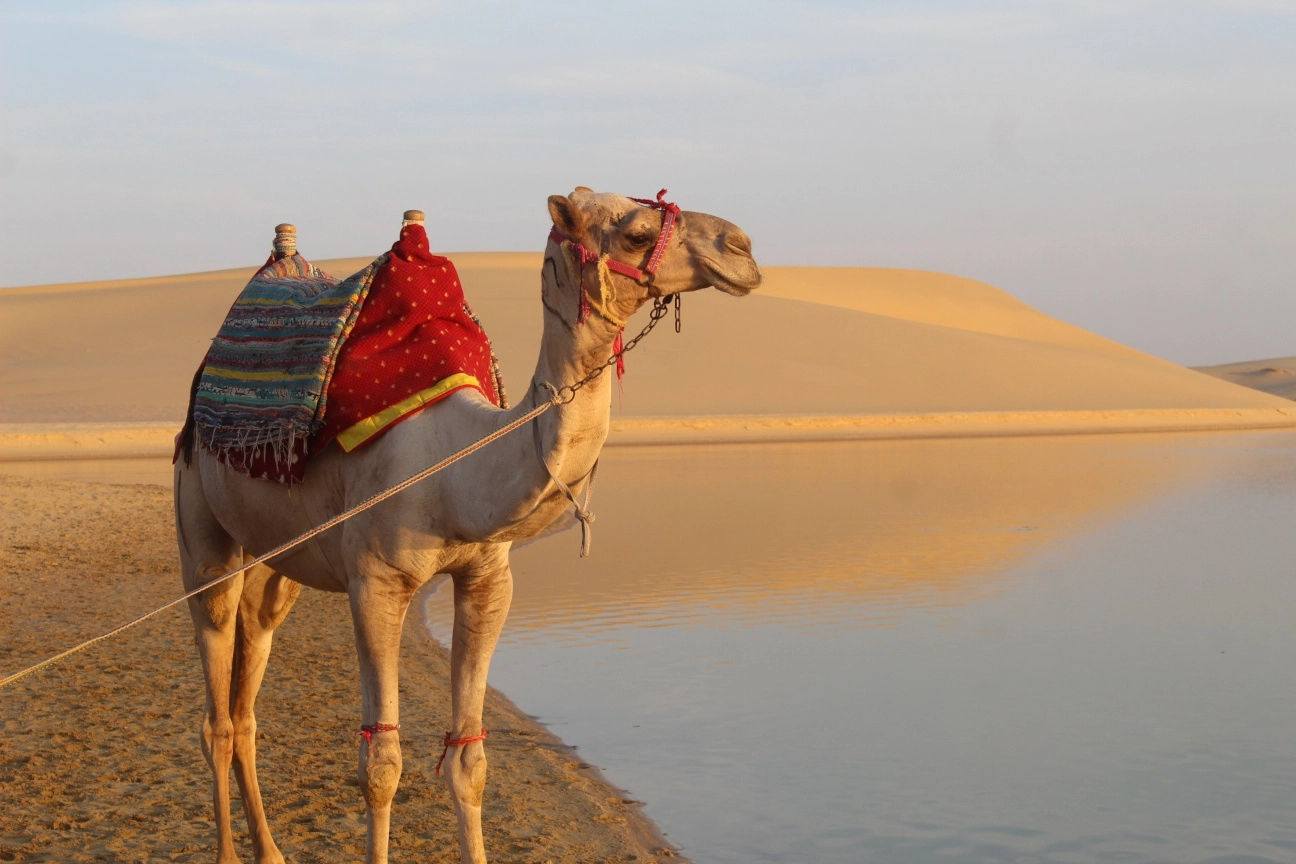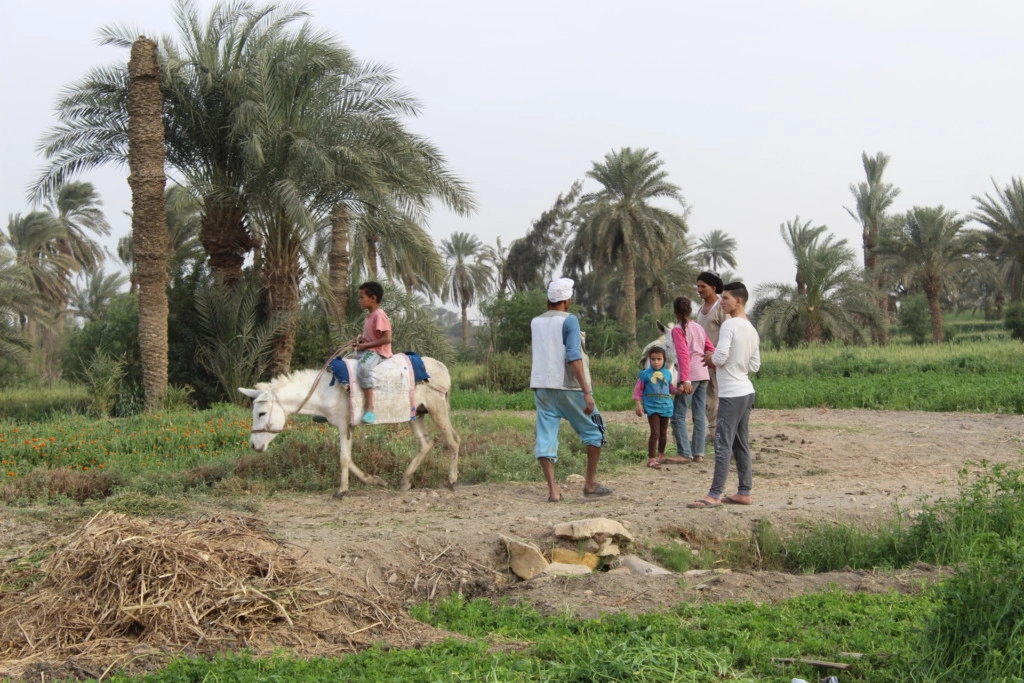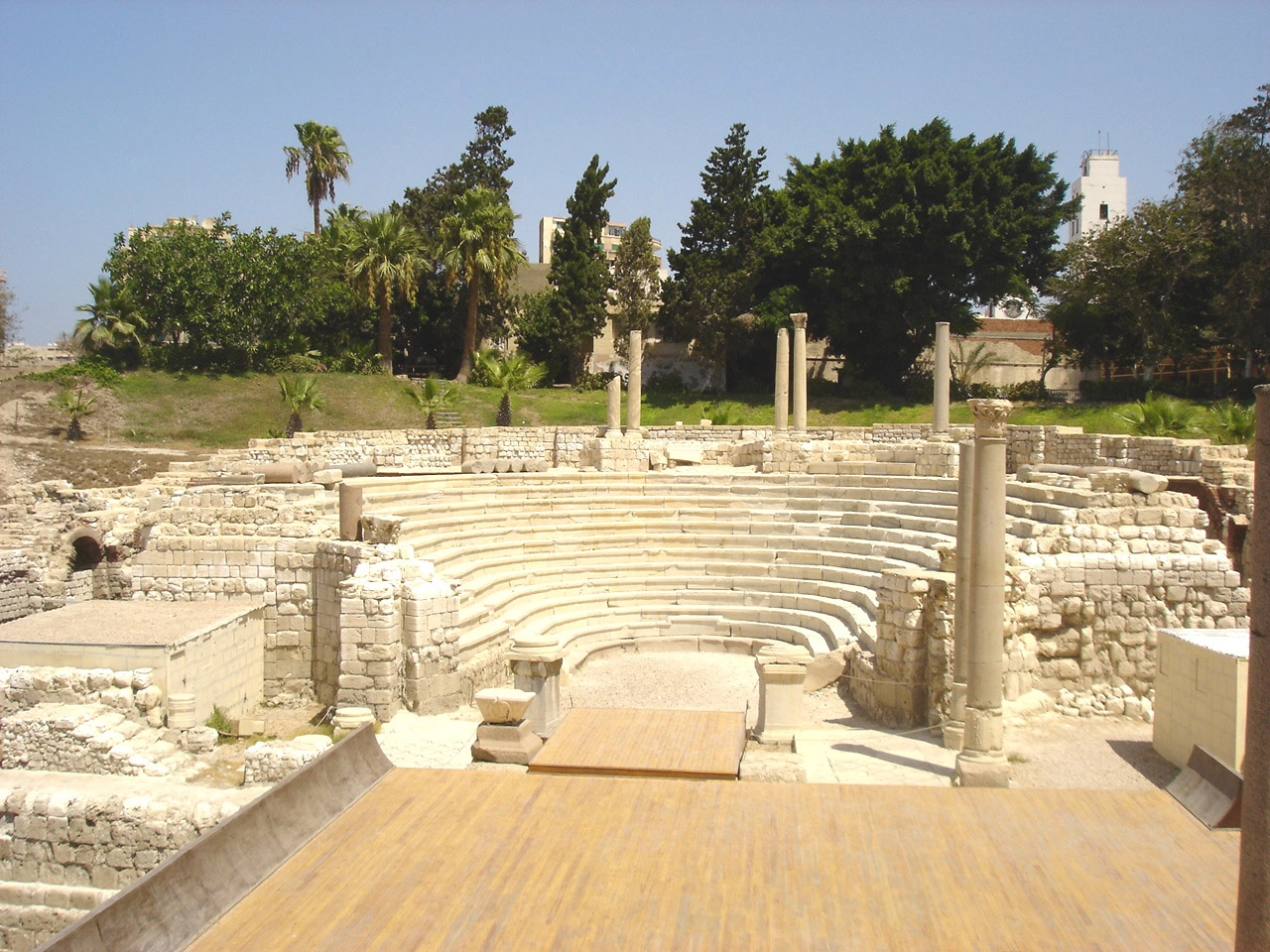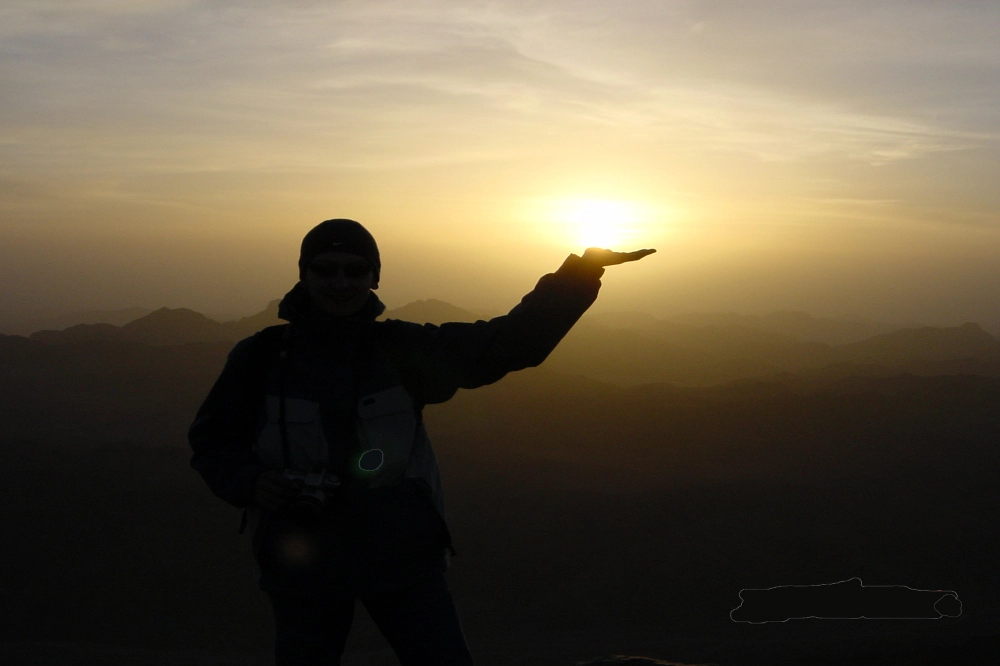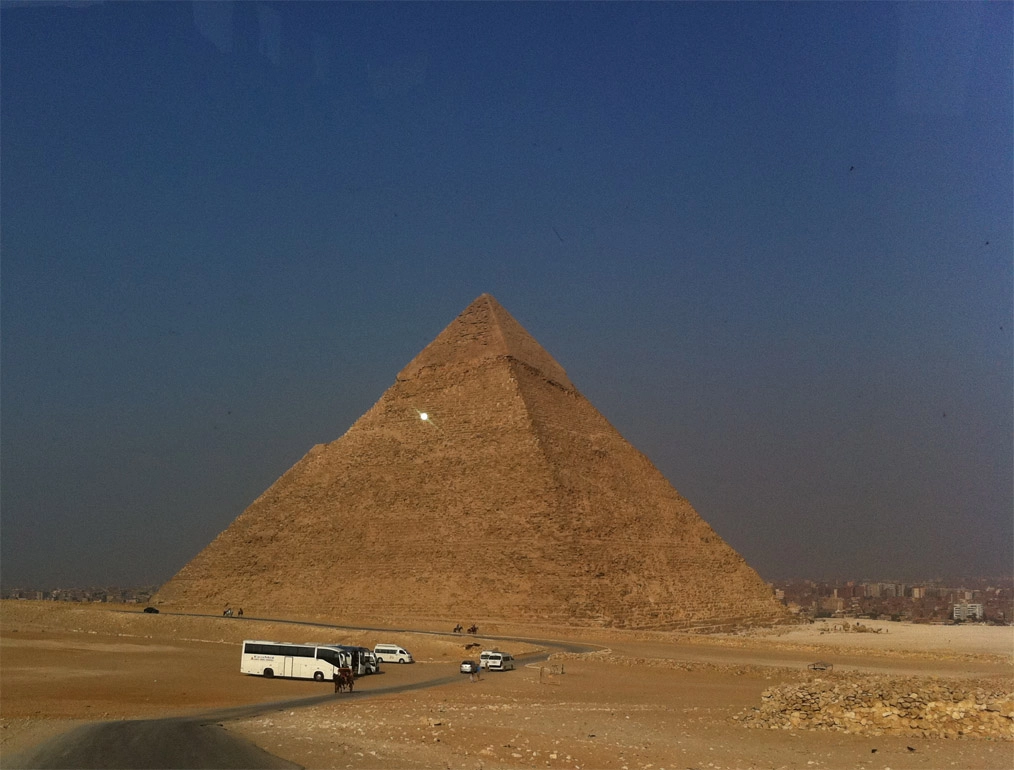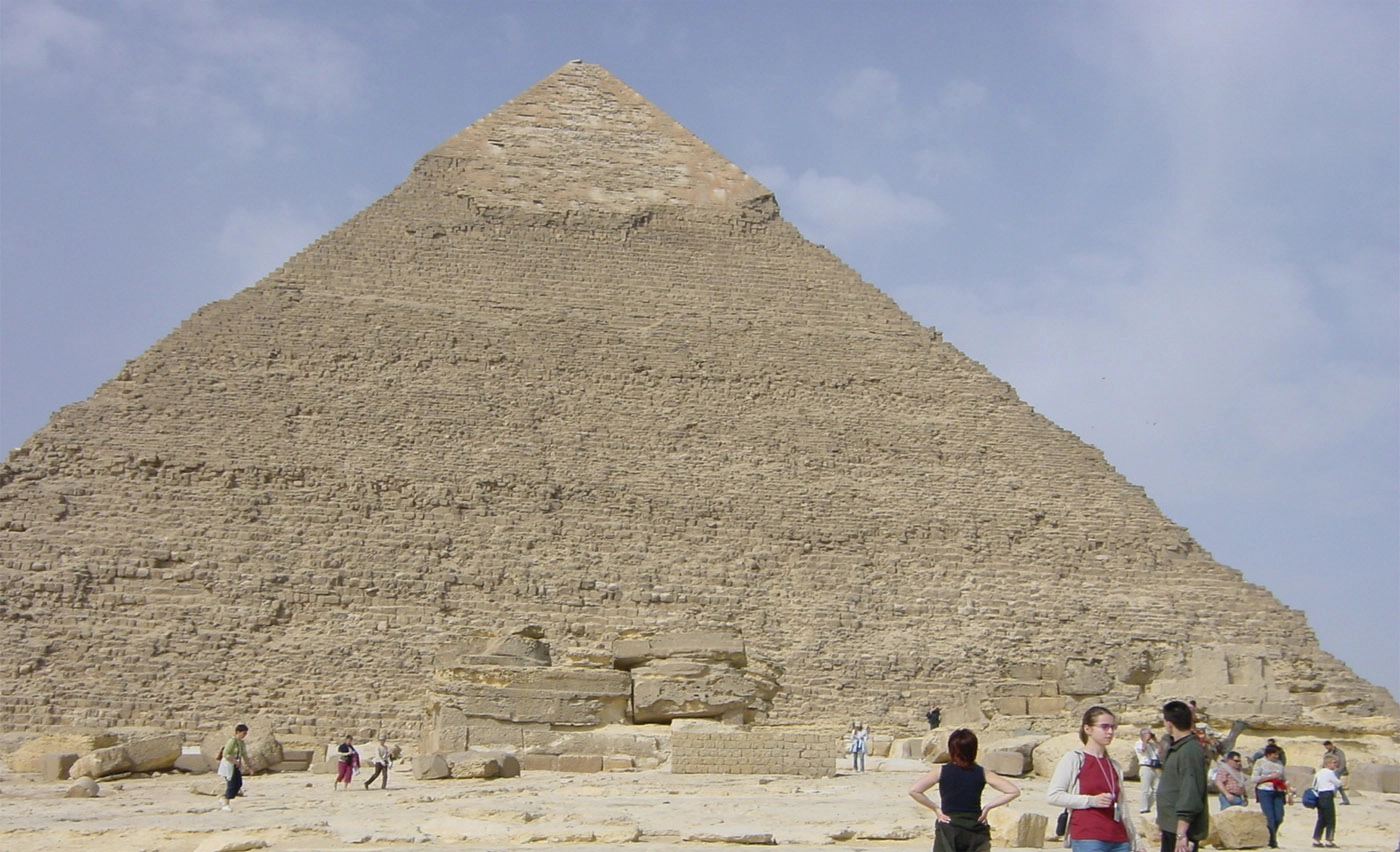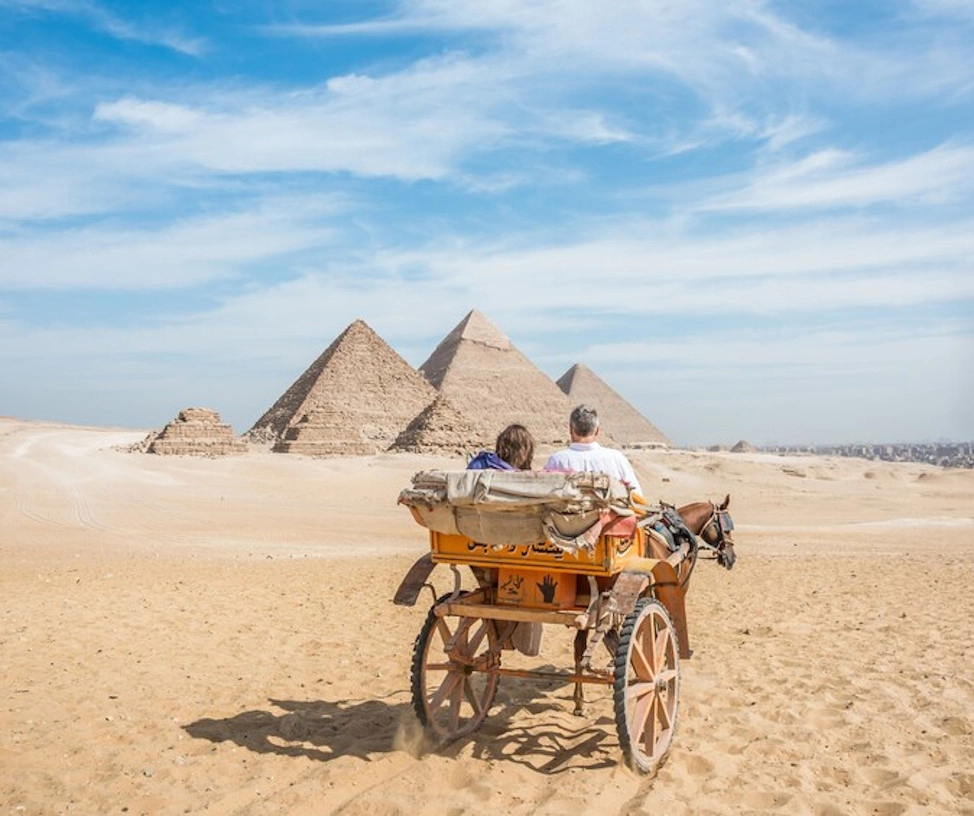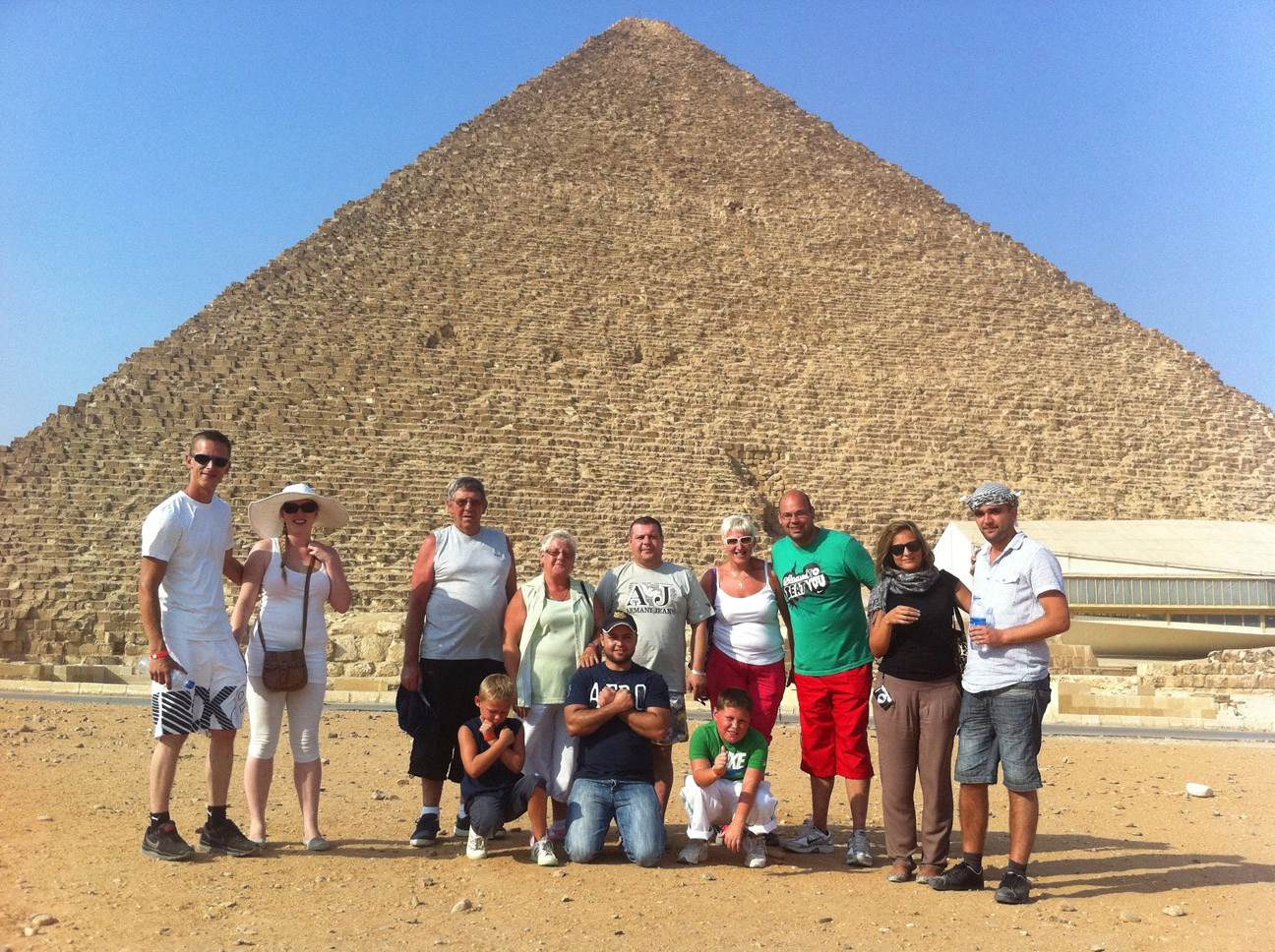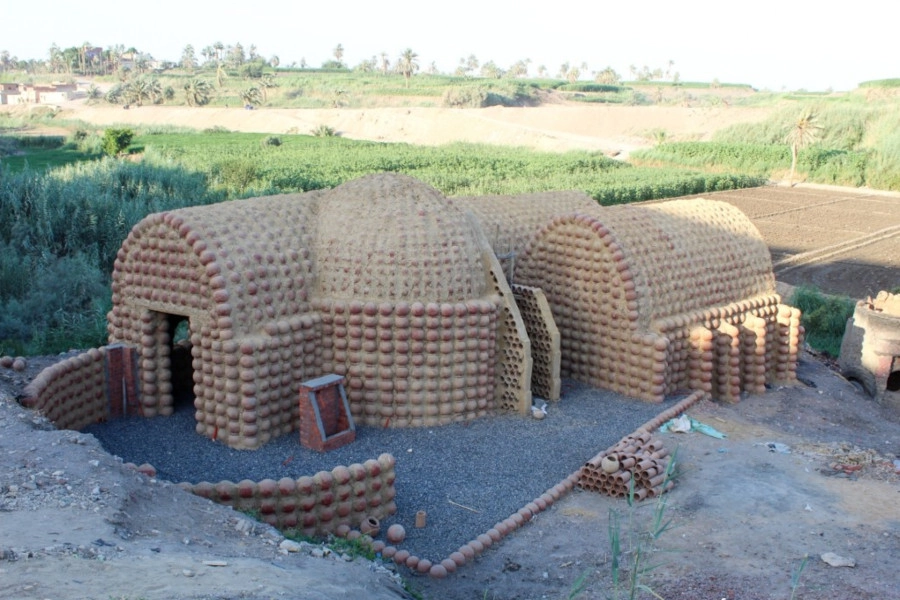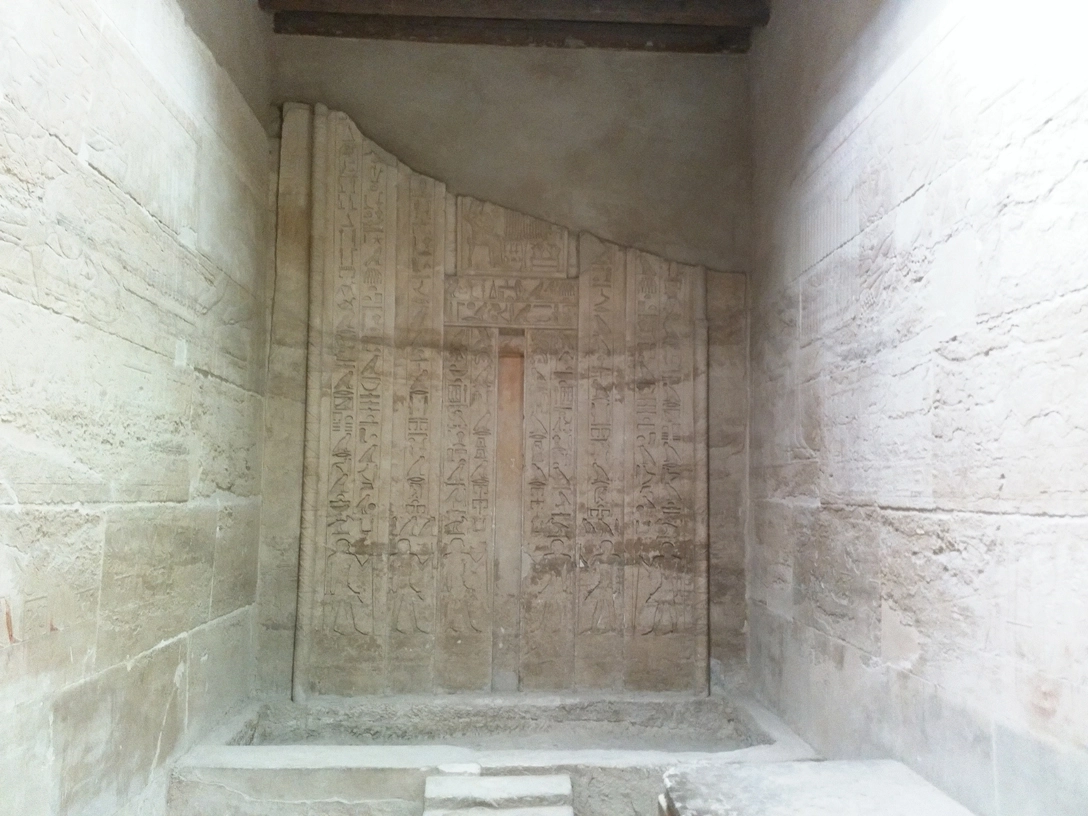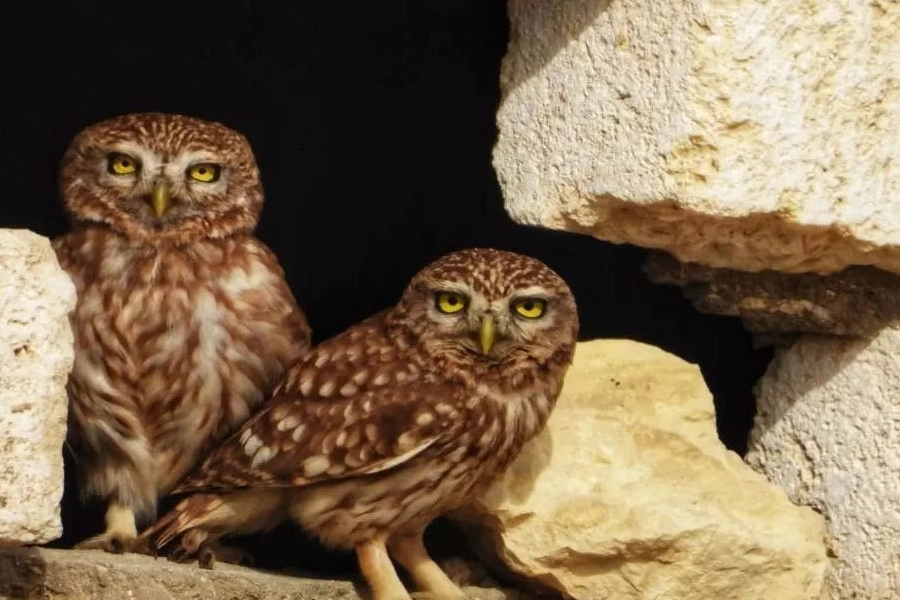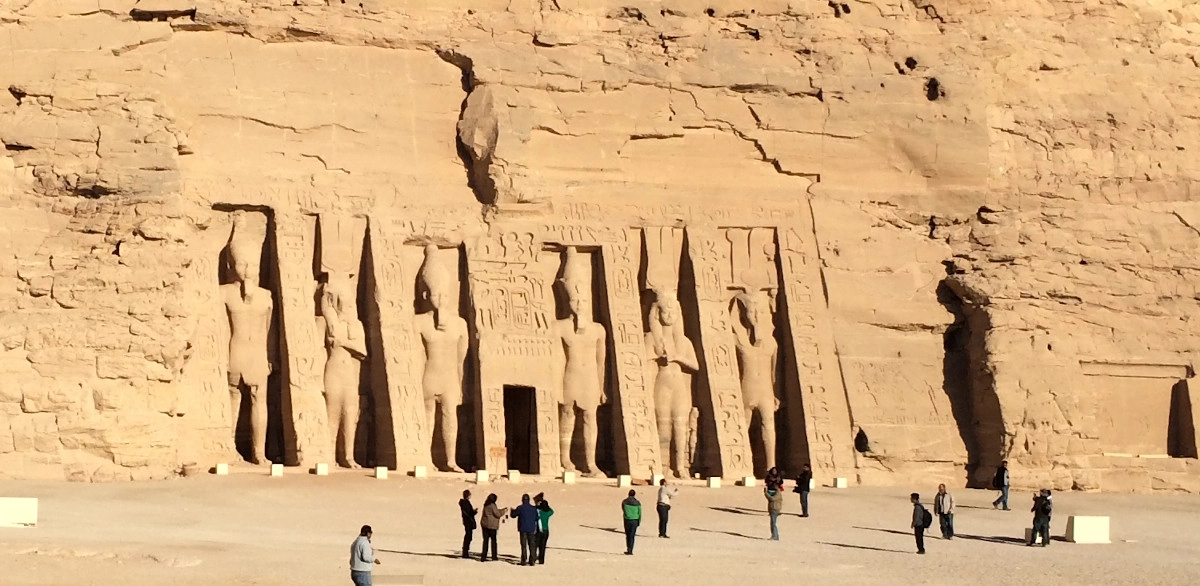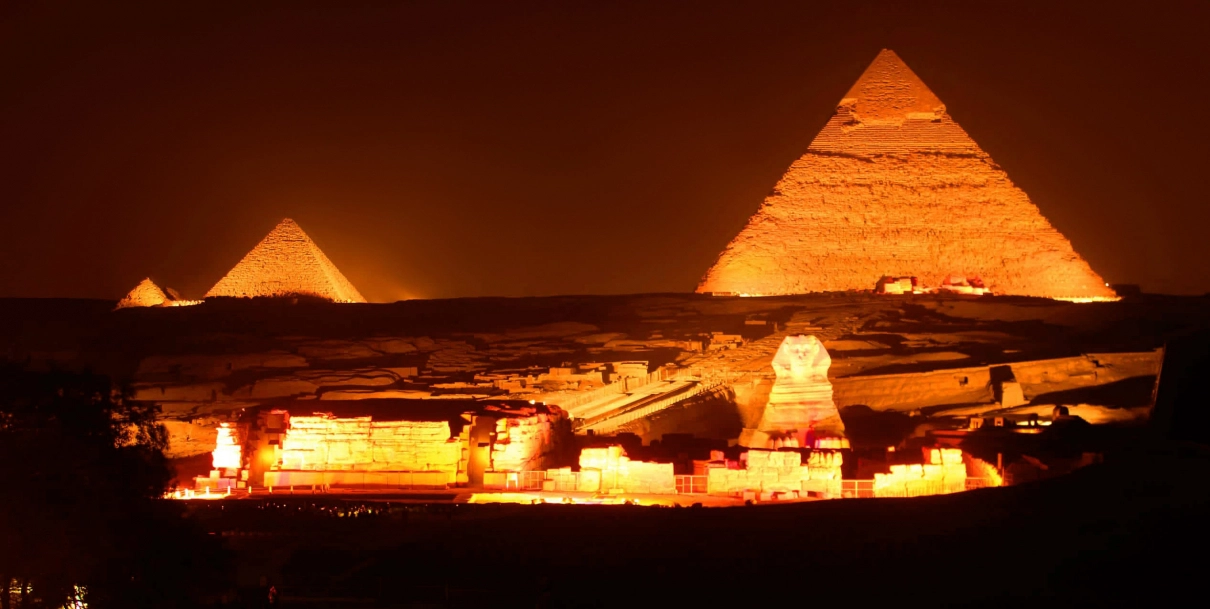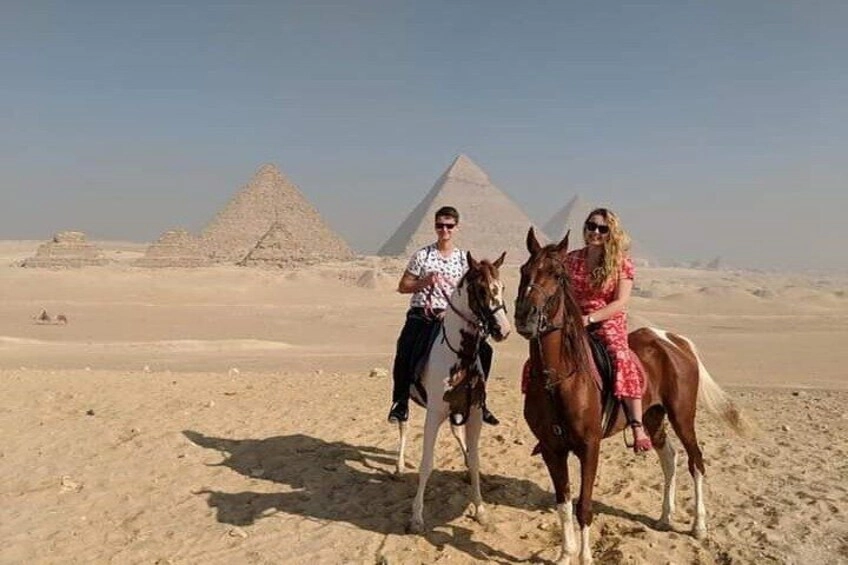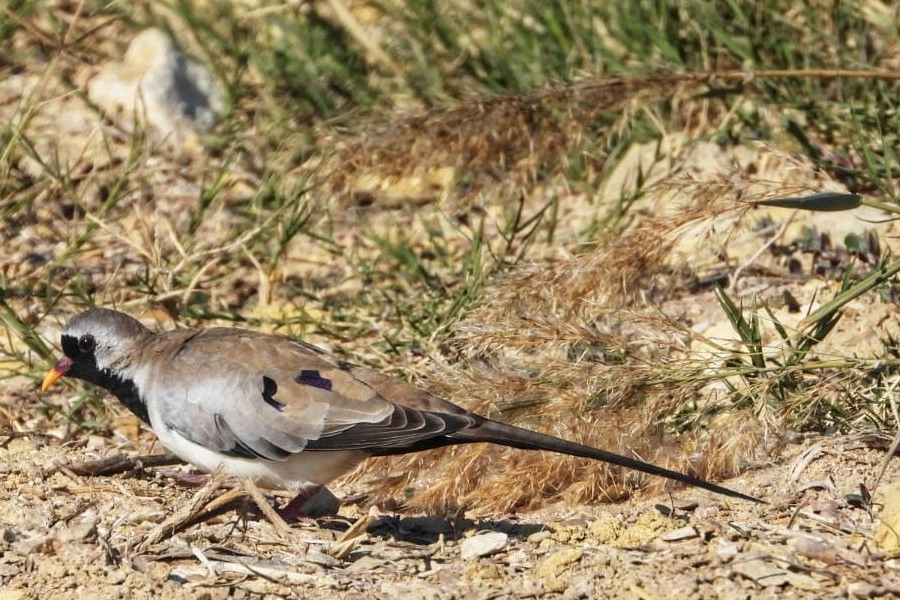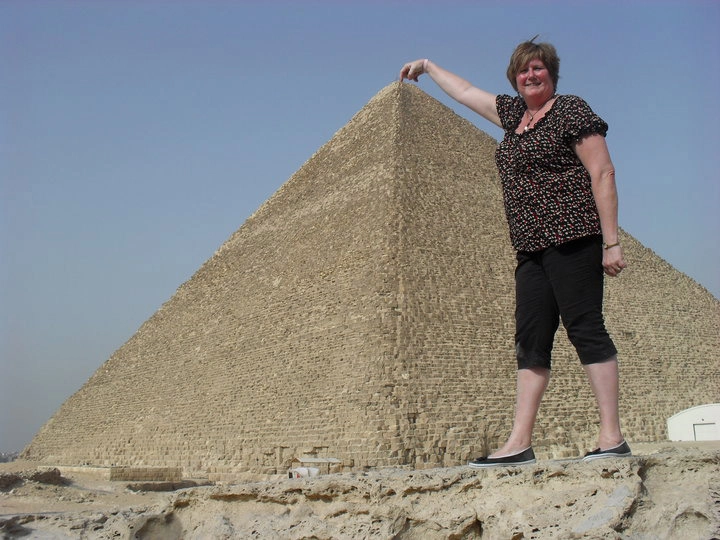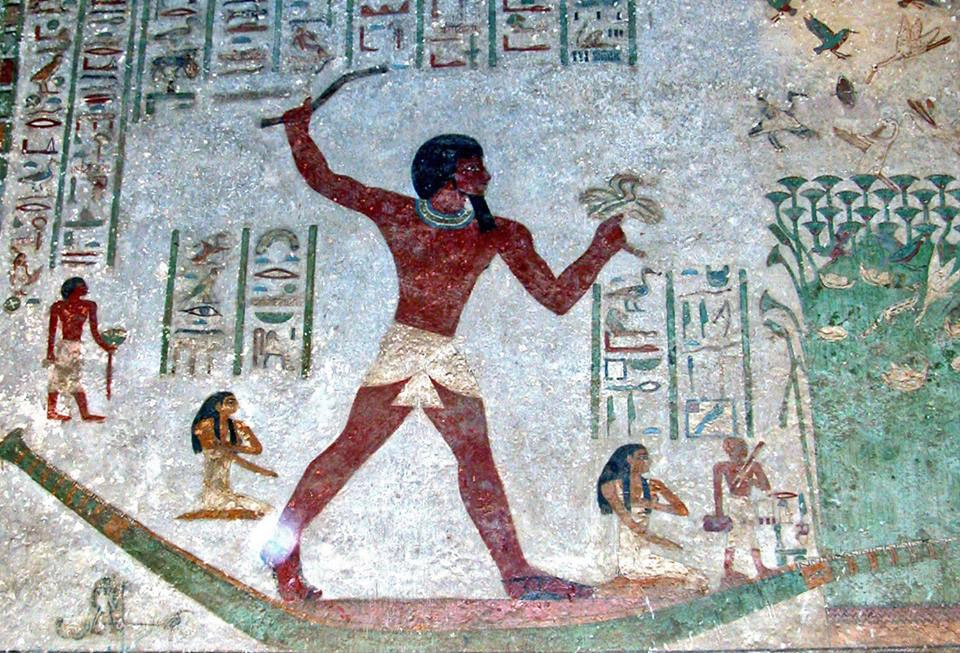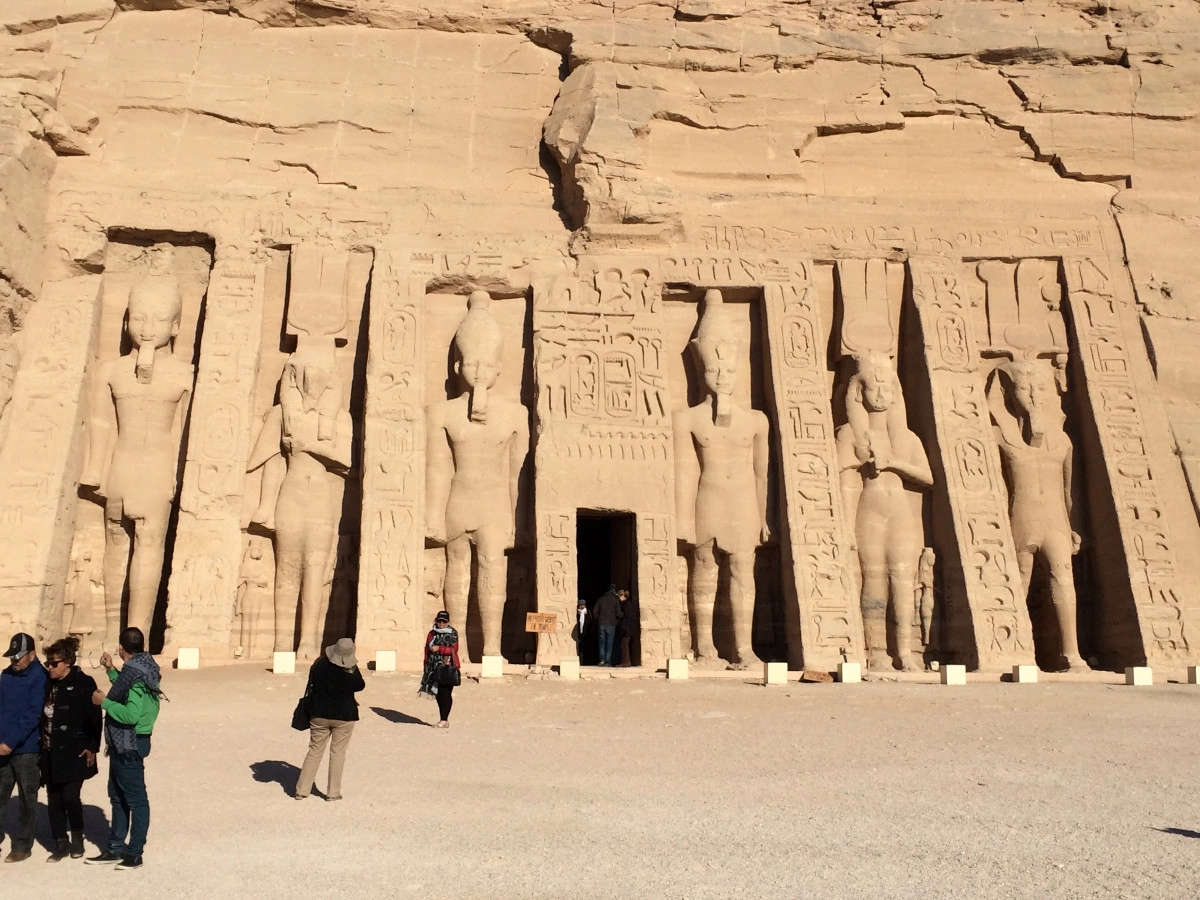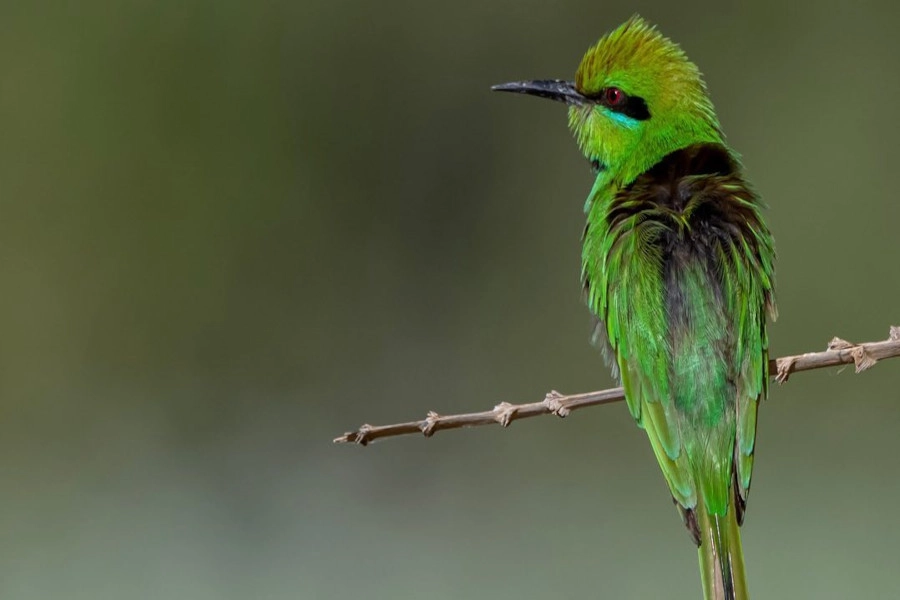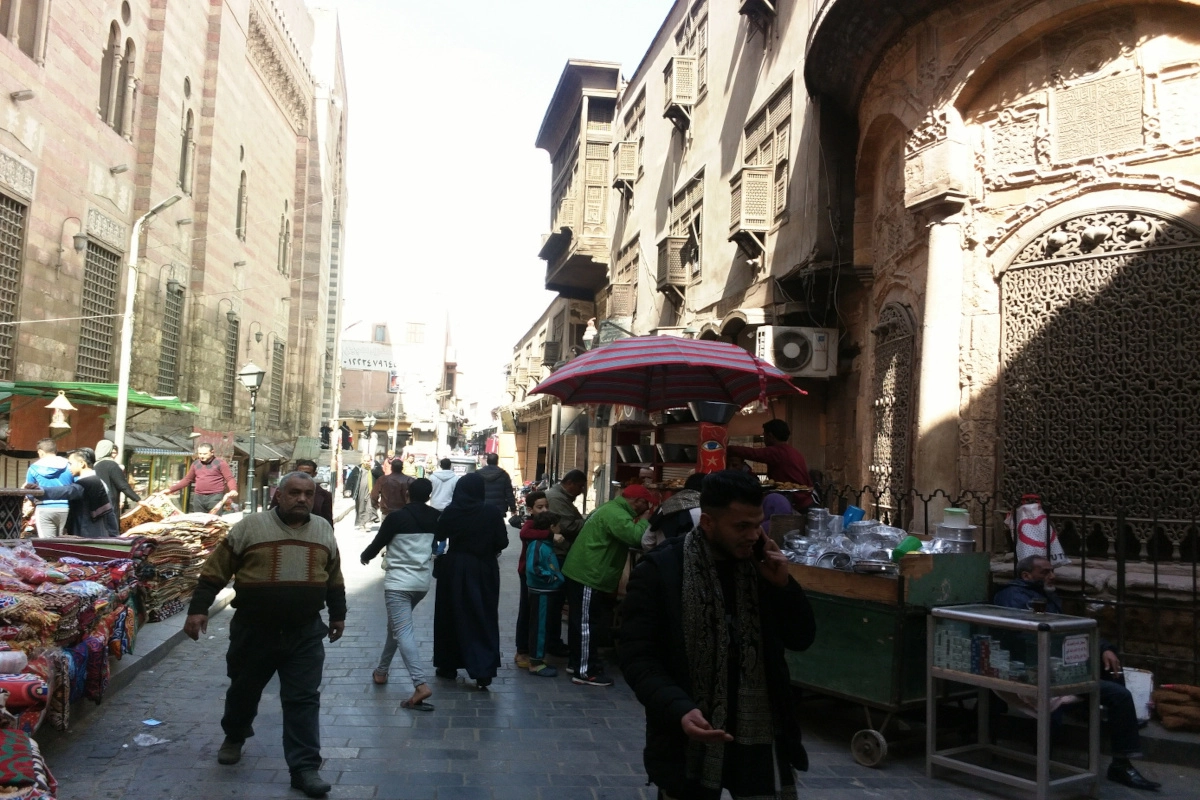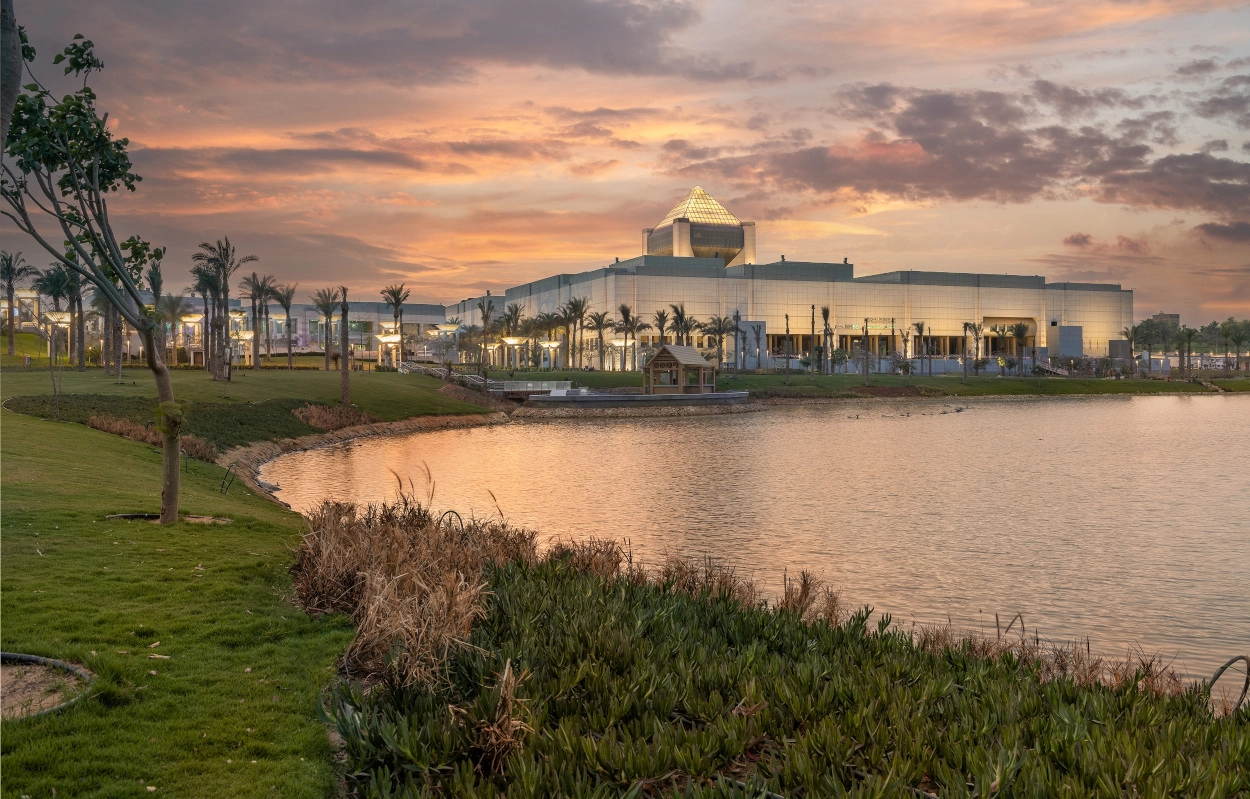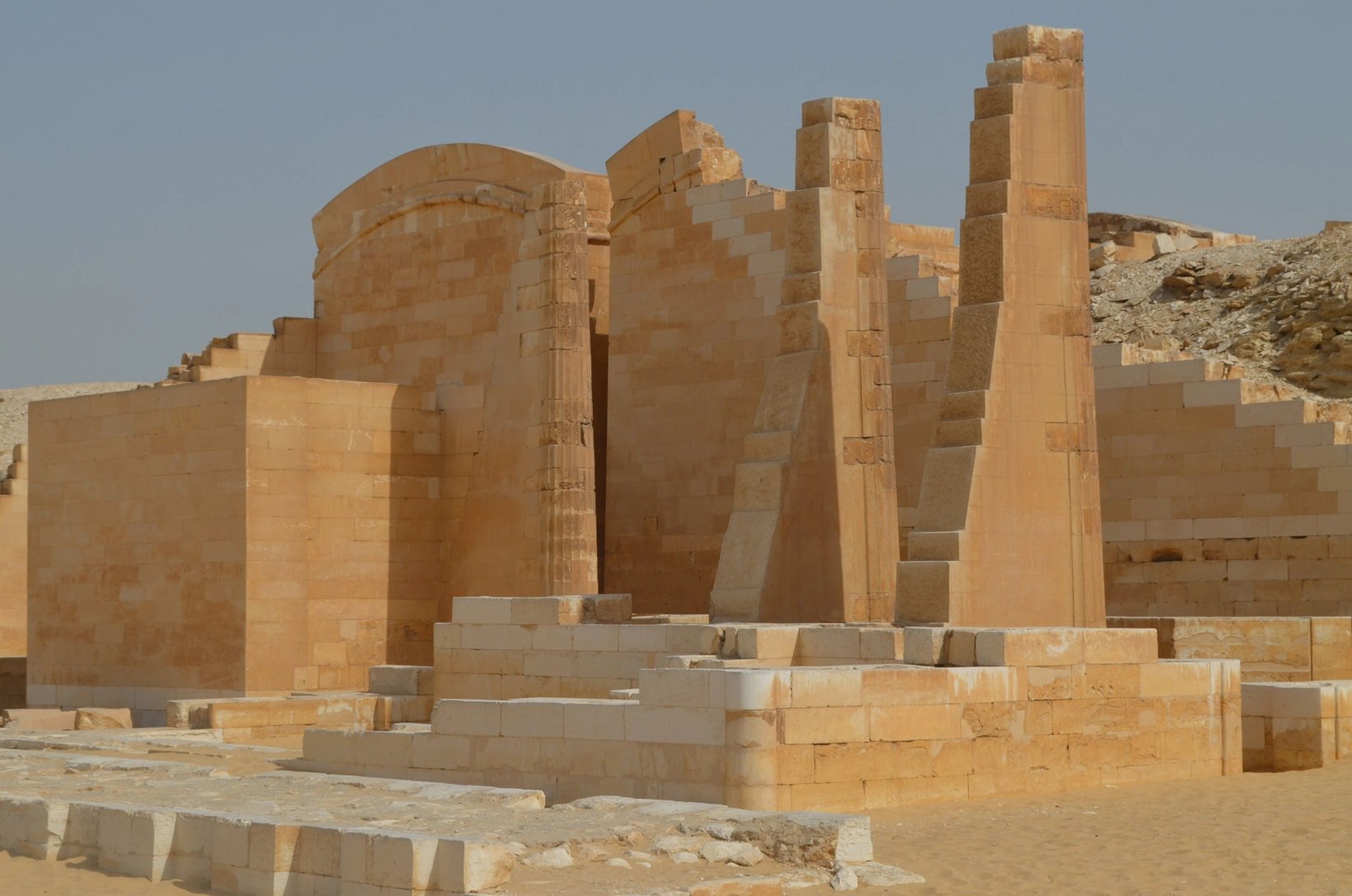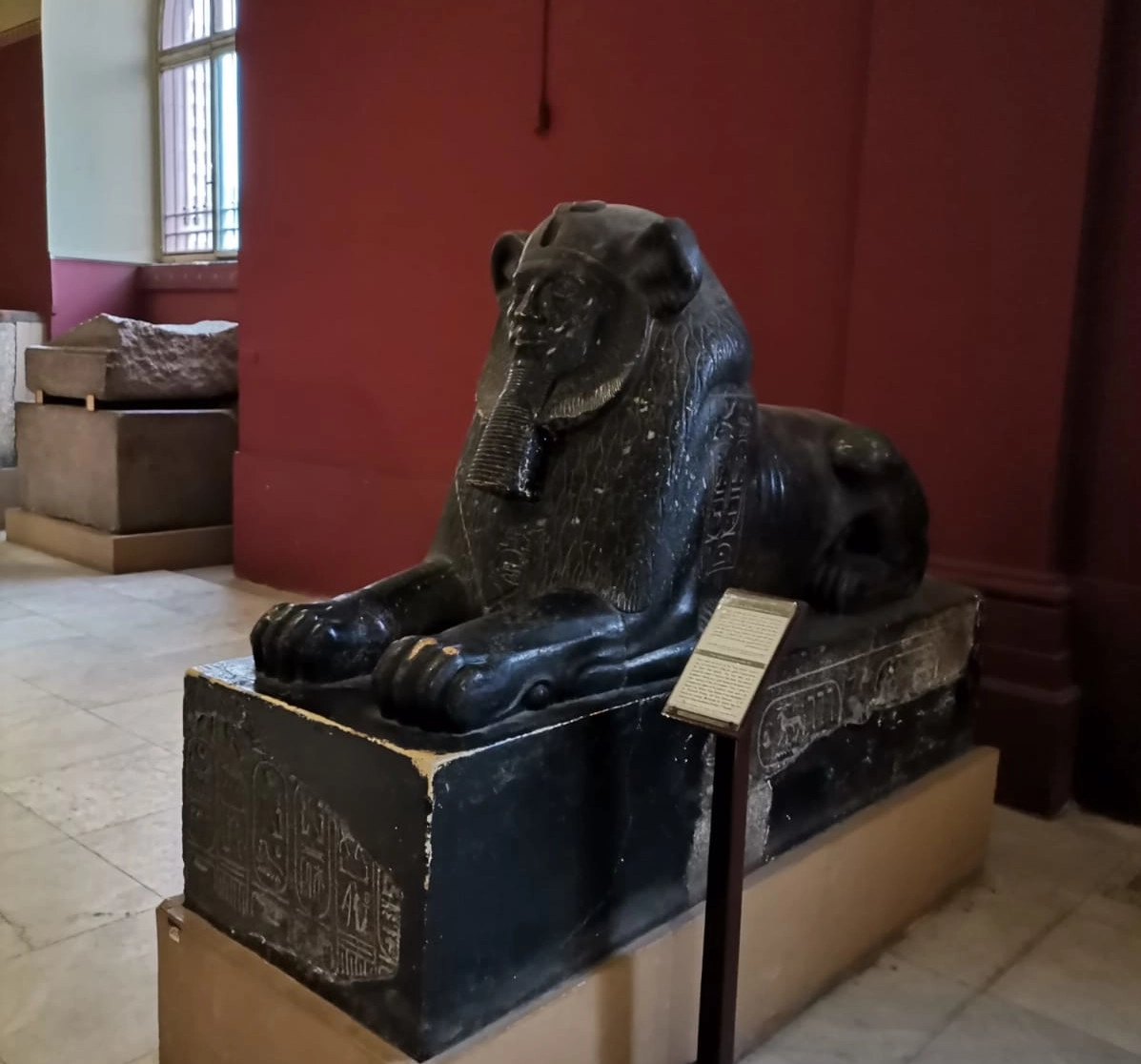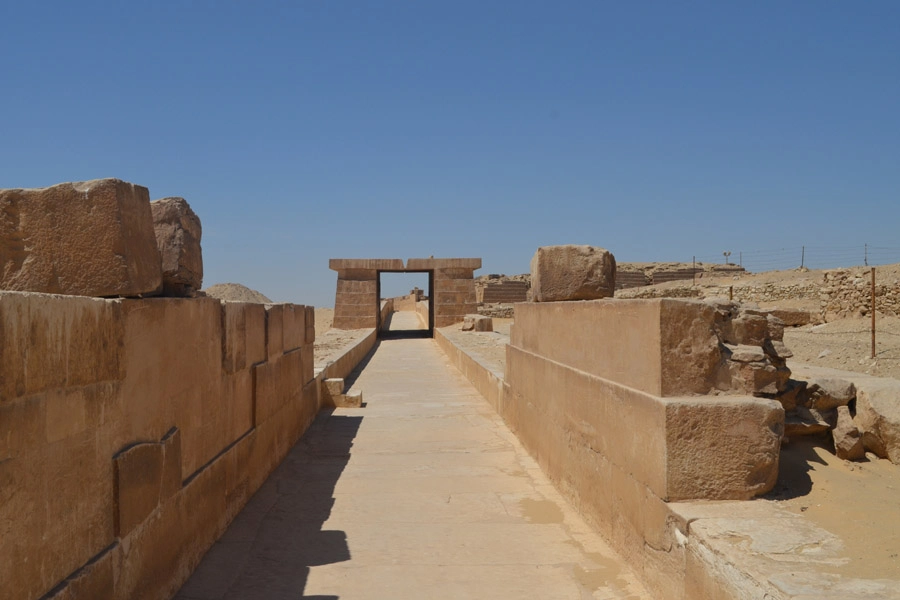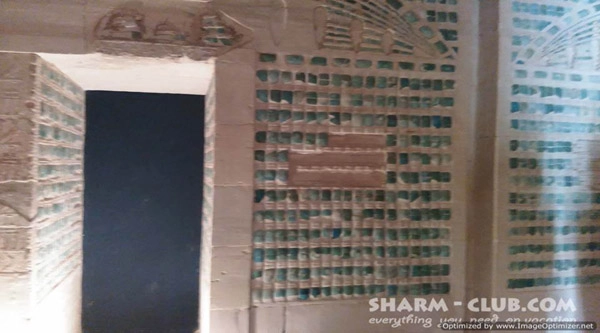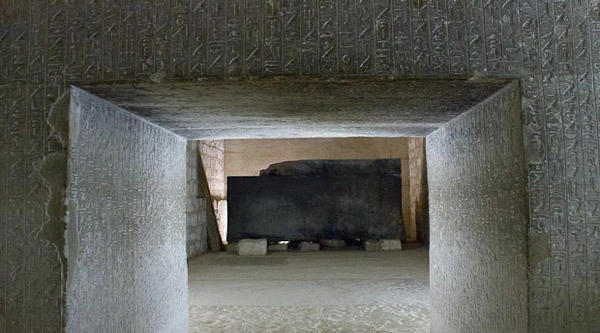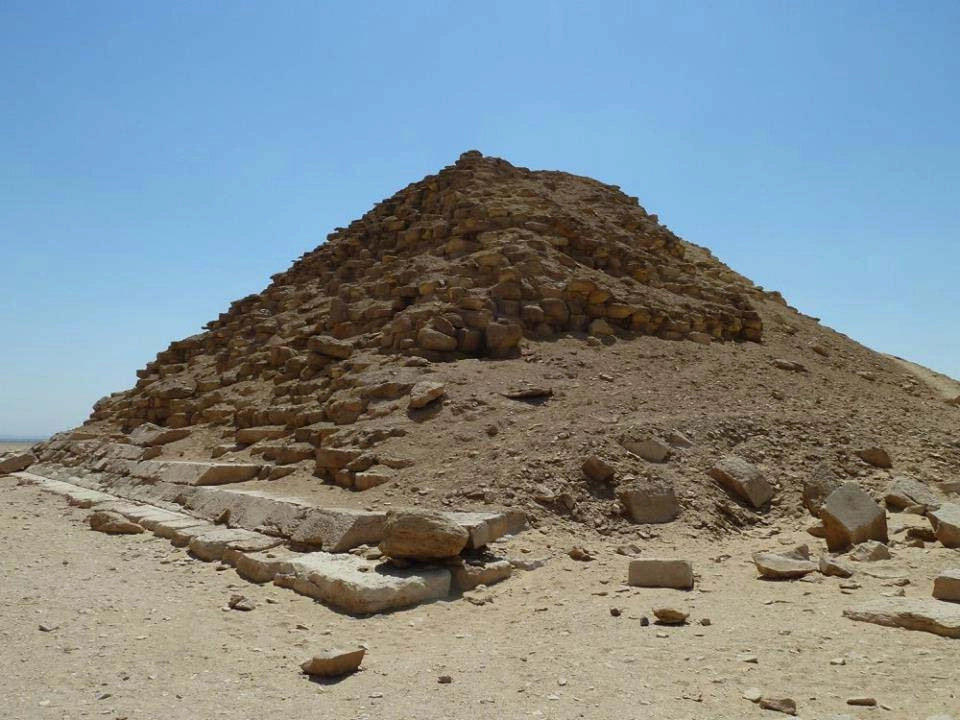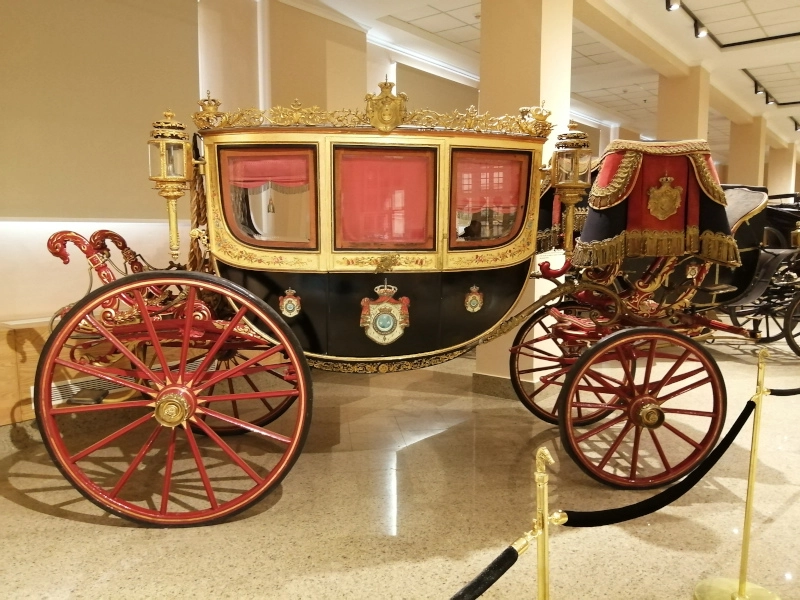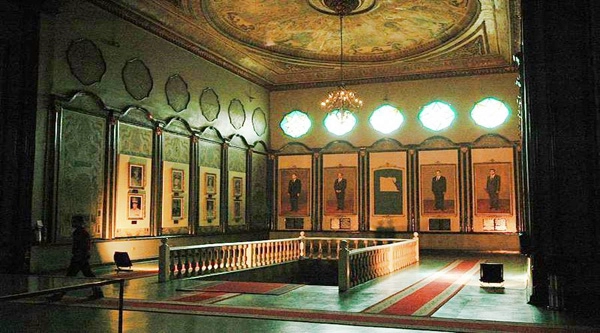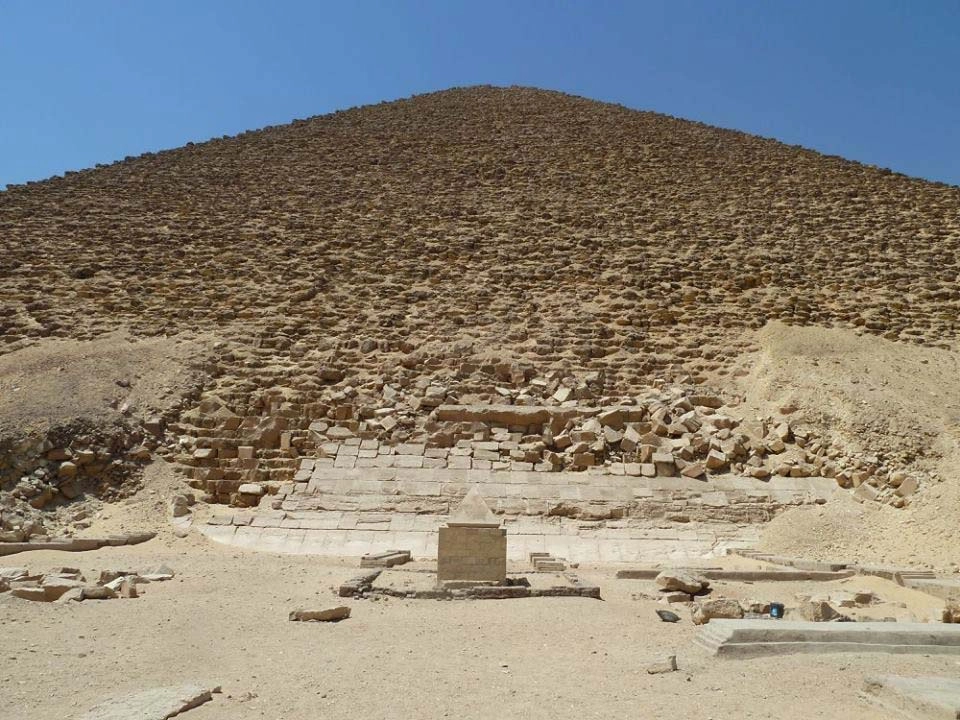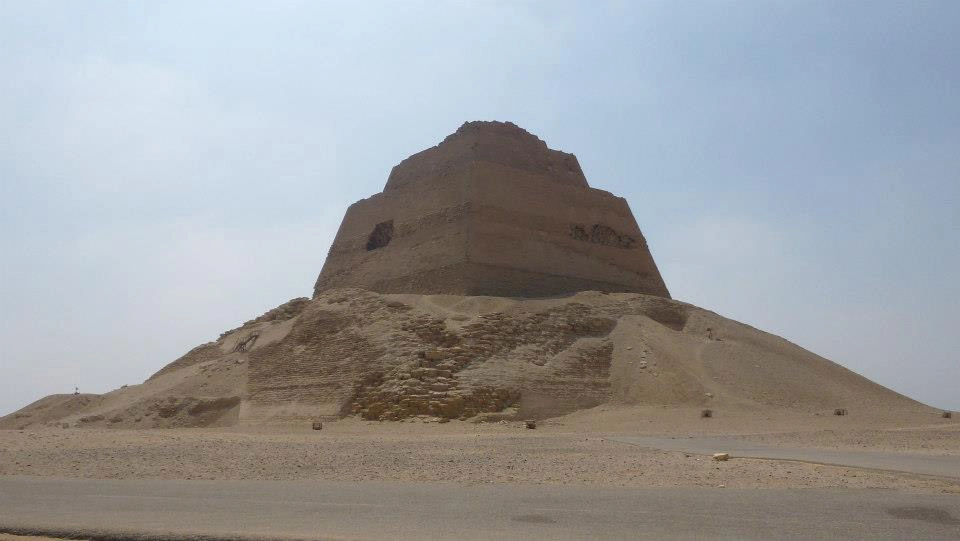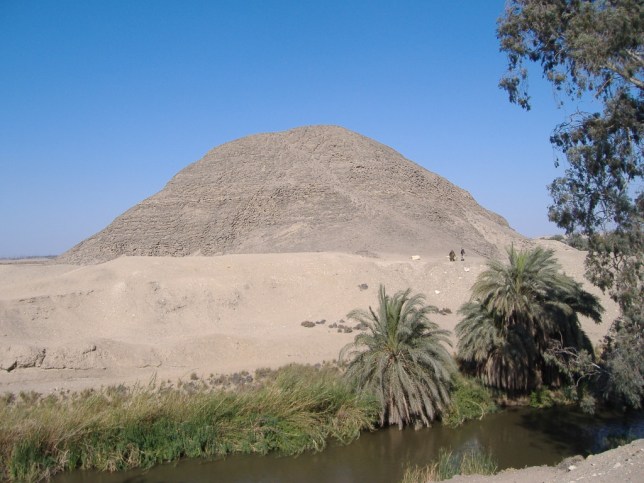Tour to Hawara Pyramid at Fayoum from Cairo
★★★★★ 5 / 5 306 ReviewsOne day tour to Fayoum oasis by a comfortable a/c vehicle to visit unique and almost unknown Hawara Pyramid. We will go with you out of a bitten track to visit one of a rare visited sites in Egypt Hawara Pyramid and its Labyrinth. Day tour to a beautiful Fayoum oasis from Cairo is a great way to spend your day out.
pyramids-excursions
Today the pyramid is not accessible, as the chambers are submerged; in Petrie’s time when the pyramid was discovered and excavated the burial chamber was nearly half submerged. Nowadays we can see the pyramid from a distance like a natural plum-pudding hill but in reality it is just a ruinous lump of millions of dark mud bricks ( long ago lost its limestone casing).
When we arrive at the pyramid’s east side, we pass through the remains of a necropolis, which extends around to the north side. This area can be explored but we have to beware of deep, vertical tomb shafts.
The pyramid was built to confuse tomb-robbers, with the entrance on the southern (instead of the usual northern) side and an intricate arrangement of internal passages. We can peek into the entrance and walk a few steps down the sloping passage, but ground water currently may stops us from going any father.
When Petrie entered the pyramid in the 19th century, he found 2 sarcophagi, one for Amenemhat III and one for his daughter, Nefru-Ptah, who died suddenly while her father was still alive. She was buried temporarily in her father’s pyramid until her own tomb was completed nearby, to which the whole burial was then transferred, leaving the sarcophagus behind. The new tomb remained intact, apart from water damage, until it was opened in 1956, yielding the princess’s treasures.
But the Hawara Pyramid is actually famous for another structure, is believed to be buried away from the foot of the pyramid to the south and across to the other side of the modern canal. It is the Labyrinth, of which today is little to see: a few fragments of granite and limestone lotus columns litter the empty moonscape. But the investigations carried out in 2008 by the National Research Institute of Astronomy and Geophysics using geophysical surveying techniques appear to support the suggestion that part of the Labyrinth lies yet to be discovered deeper below the surface than Petrie’s and later excavations went.
It is believed until now that the Labyrinth was the mortuary temple of Amenemhat III, but because the apparent underground structures are out of alignment with the pyramid, scientists now doubt if it is an older structure that may served some other function.
The pyramid got its fame when in 1888 professor Petrie discovered the first of the famous Fayoum Portraits in the tombs around the pyramid.
- ✓ Pick up and drop off from your Cairo hotel.
- ✓ Transfer by a private modern a/c vehicle to Fayoum.
- ✓ Lunch in a local restaurant in Fayoum.
- ✓ Water in the car.
- ✓ Entrance fees to Hawara sight.
- ☓ English speaking guide extra 20$
- ☓ Personal expencies.
- ☓ Any extras not mentioned in the program
- Documents
- Snakes and water
- Warm clothes in winter
- Extra cash
Fayoum Tours

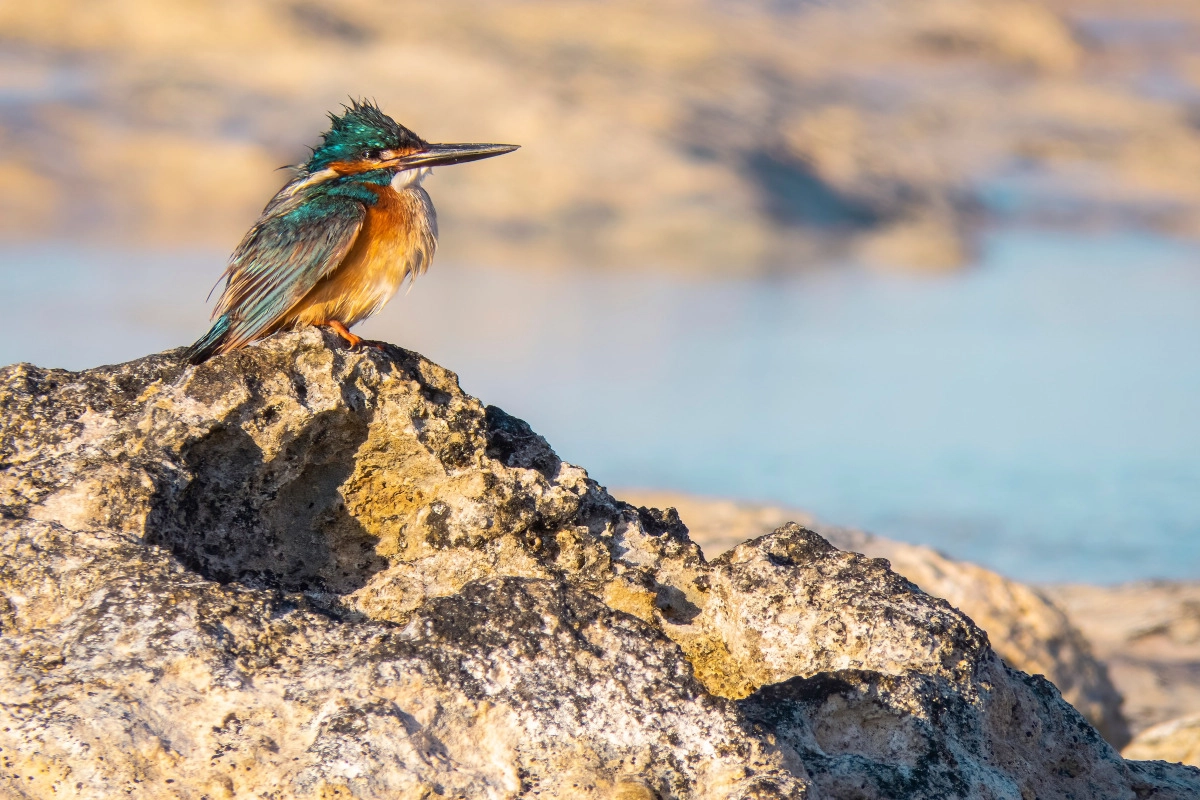
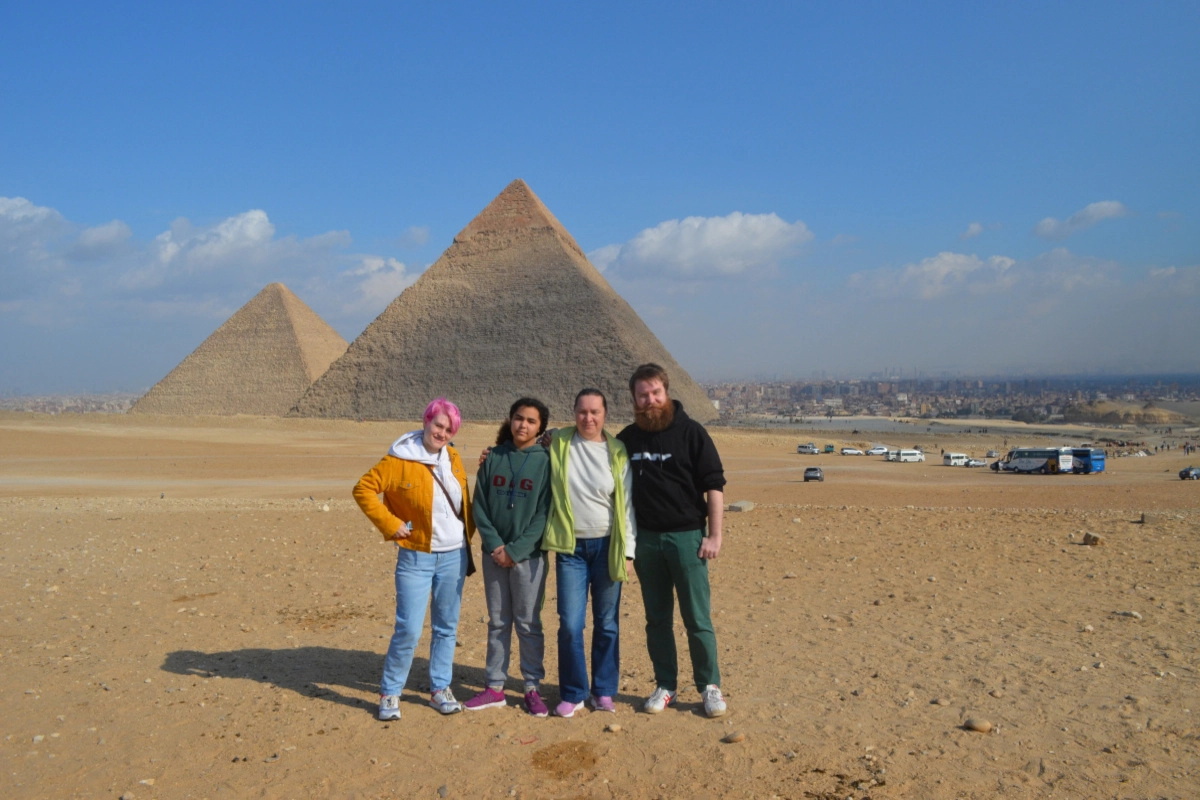
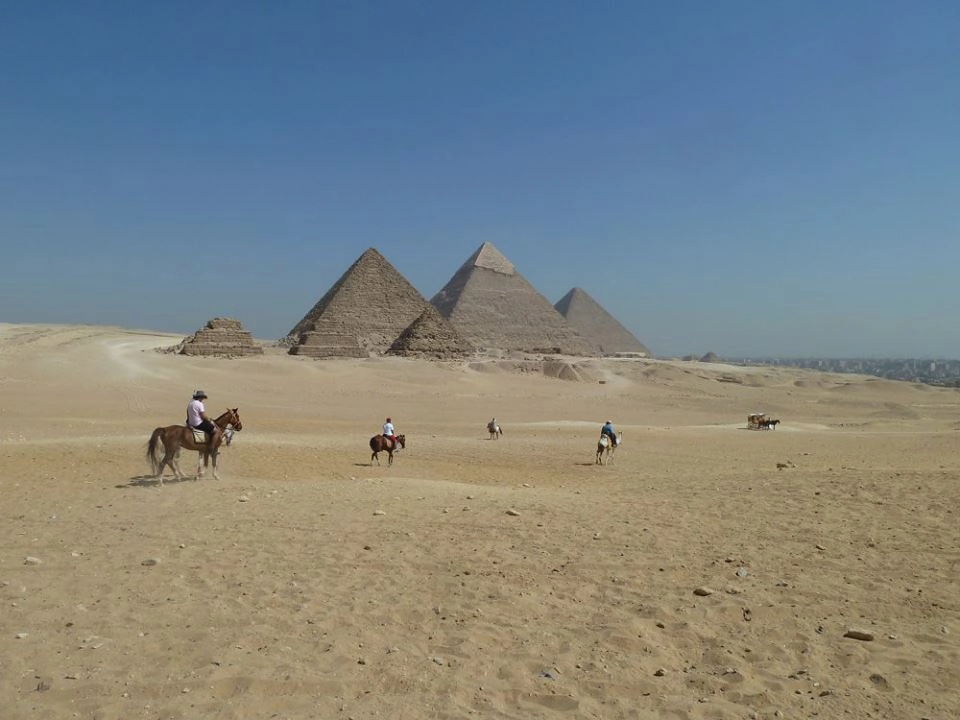
Private all inclusive: Giza pyramids, Sphinx, Memphis, Saqqara, lunch & camels
- 12 Hours
- Pick up: 06:00
£98
